On the morning of May 7, 2024, after a hectic first few days in Mumbai, I woke up to my phone alarm at 5:30 AM in the hostel I’d reserved in the Marol Maroshi neighborhood. After several false starts and a flurry of WhatsApp messages, I had successfully booked a guided hike to the highest point of Sanjay Gandhi National Park, and I was incredibly excited to get started. For my first visit to SGNP, I had seen the Kanheri Caves, which are open to the public without a guide, but most of SGNP’s hiking trails are in a wild “Cool Zone” reserved for naturalist-guided hikes only. (This is both to minimize human disruption to the ecosystem, and because this particular ecosystem is home to some fifty-plus leopards and it probably wouldn’t be a great idea to have people wandering through it completely willy-nilly, so to speak. Coexistence requires setting some boundaries).

I hopped in a motor-rickshaw to the park gates, and soon met up with my guide, Vaibhav Haldipur. Once I got to know him, Vaibhav almost seemed like an alternate-universe version of myself, perhaps similar to the person I would have become if I had been born in India. We shared the same age, and he like me loved animals and nature and was a devoted aficionado of the biodiversity tracking app iNaturalist. He had been working and studying in and around Sanjay Gandhi National Park since 2017, and during that time had only seen a wild leopard twice but had accumulated an extraordinarily detailed and precise knowledge of the local ecosystem and its inhabitants, considerably deeper than this peripatetic writer’s knowledge of any one place.
And what a place it was. The Cool Zone of Sanjay Gandhi National Park was a beautiful mosaic. One type of habitat, perhaps the most common, was dry deciduous forest, with spindly leafless trees reacting to the ongoing Indian dry season in the classic way I remembered from countless New England winters. These were broken up by lovely patches of “evergreen” forest, not needle-bearing conifers like American evergreens but simply flowering trees which had kept their leaves through the dry season. Later on in the hike, Vaibhav would tell me more about some of these trees as we saw them: the “ghost tree” with its bleached bark bringing back memories of New England’s birch, the evergreen ashoka tree with its flowers and traditionally ascribed cooling properties (evapotranspiration again!), a tree that produced autorotating “helicopter” seeds reminiscent of maples.
These deciduous/evergreen patches were themselves broken up by towering clumps of bamboo, for me delightfully reminiscent of the lemur-rich Sangasanga forest fragment in Madagascar that I’d spent so many happy days studying in the now-long ago summer of 2019.
In this rich and varied environment, the diversity and frequency of wildlife encounters were jaw-droppingly astounding. Right as we stepped onto the trail, I saw a hawkmoth caterpillar crawling on the ground, followed by a shorthorn grasshopper; a mere invertebrate amuse-bouche for the day’s nature bath. Mere minutes afterwards, we heard the calls of Hanuman langurs, and saw them peeking down at us from the branches.
Just after that, we saw an ossified leopard scat; proof positive that the great cat had walked these very trails within days. I recalled reading the work of heroic conservationist Dr. Alan Rabinowitz as a child and noting particularly his comment that big cats around the world commonly use easily-navigable human-made trails, tracks, and roads when available. Now I was seeing it for myself in the wild! The tracks of wild boar and deer, expertly pointed out to me by Vaibhav, gave an additional reason. Perhaps path dependency was at work here in addition to convergent behaviors: if one species finds a trail useful, so will its predators.
Barely fifteen minutes after the first leopard scat, we saw another, this one fresh. A leopard, one of the growing population in this island-park in the heart of a gigantic megacity, had been walking where I was walking now just a few hours before. By this point, I couldn’t stop grinning: I felt like a little kid awash with joy. We would see several more ossified scats and pugmarks as we continued on the trail, and each time it brought me a thrill to realize the presence of the genus Panthera, the archetypal “big predators,” coexisted with and even cherished in the heart of a city of tens of millions of people. The Sanjay Gandhi National Park leopards were already adapting to the urbanized local and changing global climate by becoming nocturnal to avoid the heat, and their population had been steadily growing in recent years; indeed, one of the WCS researchers I’d met at the Mumbai Zoo was investigating whether it would be possible for them to disperse to the farther-out Tungareshwar sanctuary. Their thriving survival (thrival?) is to me a brilliant sign of hope for the future of wildlife in the Anthropocene.
Of course, a big part of the reason why protecting big, charismatic predators is important is because an ecosystem large and intact enough to support them will also support an immense range of other life-forms; the classic “umbrella species” concept. This was very much in evidence; as we continued the hike, Vaibhav identified the chorus of birdcalls we heard by ear, then showed me pictures of them on his phone: the emerald dove, the pitta (herald of the monsoon!), the sunbird (filling the niche in South Asia that hummingbirds fill in the Americas), and the great coucal.
Herpetofauna were also well-represented: a bronze grass skink (Eutropis macularia) scuttled across our path, followed by a snake skink (Riopa punctata) that I managed to get a picture of, then several more bronze grass skinks throughout the rest of the hike.
Many (if not most!) of the wildlife signs we encountered I would have completely missed on my own: Vaibhav pointed out a tree’s scratched bark as a sign of an “antler rub,” where the local sambar and chital deer rubbed the velvet off their itchy antlers. We could hear the drone of cicadas in the background, stunningly loud at times, but Vaibhav pointed out an individual cicada frozen mid-molt on an unwisely exposed patch of bark. Throughout the hike, Vaibhav pointed out Christ’s thorn berries (Carissa carandas) as a delicious local fruit, only to find that each bush we passed either had unripe fruit or had already been picked clean by local wildlife and/or passing humans. Eventually we found a few uneaten ones; they were just as good as he had promised, tart and sweet.
We saw the webs of no less than four types of spiders: an orb-weaver spider, a tent-web spider, a funnel-web spider (with the most “funnel-looking” example I’d ever seen, I finally saw how they got their name), and even a tarantula, although this last titan of the leaf litter didn’t make an appearance in person. We also saw several processions of ants on the forest floor, including one group that Vaibhav called army ants, a group of highly aggressive ants that had built a pinecone-like nest on a tree branch (the style reminded me a little of paper wasps in New England) and multiple nests of harvester ants (likely Pheidole sykesii, the Indian harvester ant) that absolutely boggled me.
They had built intriguing concentric walls, looking something like a honeycomb and something like a giant ear, to keep water out of the chambers where they harvested the fungus growing on the seeds they had previously collected. Agriculture, hydraulic engineering…the overlooked quasi-civilizational complexity of ants often make me think of the Fermi Paradox. I once saw a one-panel comic where two ants gravely conclude that having analyzed all known pheromone trails, there could be no non-ant intelligent life on Earth. I wonder if we do the same with hypothetical aliens, or they with us, simply ignoring widespread evidence of complex life activities that we don’t know how to interpret.
Then there were the completely out-of-left-field forest denizens, creatures I hadn’t expected to be there at all. At one point, we passed a majestic termite mound, with multiple soaring columns of alien architecture built with no tools save mandibles and saliva. It looked like the pictures I’d seen of from sub-Saharan Africa. Vaibhav told me that all that we saw of the termite mound was merely the tip that protruded aboveground, and invited me to touch the side of the mound, seemingly at least a meter above the forest floor. I did so, gingerly at first thinking of fragile anthills, then rapping it with my knuckles. There was no give at all; the side of the mound felt absolutely solid, like wood or stone. As with the ants, I was struck by the truly extraordinary qualities of this arthropod architecture. (Despite their similar eusocial colony-building lifestyles, termites are not closely related to ants. Ants share the order Hymenoptera with bees, and termites share the order Blattodea with cockroaches).
Furthermore, as we ascended, the concave sand traps of antlions became more and more common on the trail. I was reminded irresistibly of the fictional Sarlacc dwelling within the Great Pit of Carkoon, the scaled-up Star Wars synthesis of the antlion and Shai’Hulud. At one point, Vaibhav tempted the antlion to strike at a tiny twig he agitated the sand with: it was so fast that even reviewing the video I took at the time I wasn’t able to extract a decent still picture. Yet even more surprising than the termites or the antlions was the answer I got when I asked Vaibhav about a series of small, circular holes dug into a slightly eroded dirt-face at the side of the trail. I would have guessed them to be the work of some sort of small rodent, or perhaps an ambitious tortoise, and I was absolutely unprepared for his answer. “Aestivating crabs.” Crabs! Mumbai was a coastal city, true, but we were on a hilltop, miles from the coast, in a park ringed by roads. Vaibhav explained that these crabs lived on land and were currently waiting out the heat. They would eventually re-emerge in glory when the monsoon season turned this dry forest into a crab-friendly waterpark with umpteen rivulets gushing between the trees. (“Aestivating” is when a creature goes dormant to wait out the summer, counterpart to “hibernating” for winter, from the Latin season names aestas and hibernus).
Human activity surprised me as well. We passed a half-dug “artificial watering hole,” which Vaibhav said had been abandoned when this part of the park was shifted into the low-interference “Cool Zone.” Still, the fact that it was even on the minds of local management was a great sign: making water available is a quick and easy way to help other species adapt to extreme heat, and it would likely become more and more valuable for this park’s species community in the coming decades.
At about the halfway mark of the hike, as the sun rose in the sky and the heat level began to move away from “comfortable,” we saw a mammalian blur cross the trail in front of us: a ruddy mongoose. Vaibhav was impressed at this rarity, and would later describe as the highlight of the hike, naturalistically speaking. I seem to recall it was around this time (or perhaps earlier?) that he told me he was also a trained wildlife rescuer, and had considered bringing on this hike a sand boa that he had found in an unsafe part of urban Mumbai and was planning to move to the national park. He had decided against it, not knowing if the visitor he was to guide would appreciate the company. This was perhaps the one crumpled rose-leaf in the entire experience; I greatly admire serpents of all descriptions, and I would have positively adored to witness the release of a rescued sand boa.
Just before we reached the highest point, we passed a group of bonnet maca ques scampering in the trees above us. I smiled despite myself, and was rewarded with bared teeth and an anger call from the nearest monkey. Vaibhav reminded me of what I had long ago learned but had foolishly forgotten in the joy of the moment; macaques, like almost all primates except humans, interpret visible teeth as a threat.
It was right around that time that we also saw a sinuous snakeskin spread across the surface of the trail, which Vaibhav tentatively identified as perhaps once having belonged to a young cobra.
Around midmorning, we reached the highest point in Sanjay Gandhi National Park, and climbed the rusty observation tower to behold a magnificent panorama spread out below. Dead ahead, the landscape of Sanjay Gandhi National Park rolled out like a beautifully woven tapestry, punctuated by the great reservoirs of Tulsi Lake and Vihar Lake. Vaibhav pointed out a crested serpent eagle (Spilornis cheela) circling above the hills in the middle-ground of our field of view, instantly identifiable (to him, at least) from its striking cry.
During our descent, crossing a solidified Cretaceous lava flow in this Deccan forest-fragment in the heart of a technocapital-supercharged megacity, I felt positively blessed to be living on Earth, and to have seen such a multiplicity of biological wonders. But it wasn’t quite over yet; when we made it to the Kanheri Caves, the endpoint of the hike and a return to public transit-linked areas, Vaibhav managed to show me the exact same area I’d seen a few days ago with new eyes, those of a naturalist trained to the delightful intricacies of an ecosystem. He showed me that the ancient water cistern I’d glanced at near one cave was actually full of frogs and small fish, answering my confusion with an explanation that the fish had reached this isolated rock-carved storage tank were mudskippers (or some relative) that could crawl across bare rock for brief periods. Then in Cave 3, the great chaitya widely known as the most impressive of the Kanheri complex, Vaibhav led me into a pillared passage behind the stupa at the far end (that I hadn’t even realized existed on my first visit!) and showed me the sleeping bats clinging to the ceiling. There were only a handful to be seen, but it was no less charming to see their furry forms. Vaibhav had expected more; perhaps the others had chosen one of the other caves for their daytime slumbers.
Our enchanted journey then finally wound to a close. It wasn’t even noon yet; I admired the Kanheri Caves a little more, said hi to the WCS macaque researchers I’d talked to in-depth on my first visit, bought a drink at the canteen, watched the macaques a bit, then took the bus back to the park entrance and a suburban train back to downtown Mumbai.
If this hike sounds like an implausibly eventful affair, a fantastically constant succession of new biological wonderments, that’s because that’s what it was like. At some points, it seemed like every hundred meters, or after every little bend in the trail, Vaibhav would find some new amazing creature to point out to me. Sometimes it felt like I half-stumbled from creature to creature in a near-haze of fascination and awe. This forest, I reflected, was a true exemplar of viriditas, the philosophical quality described by the character Hiroko Ai in Kim Stanley Robinson’s Mars trilogy as a quasi-spiritual incarnation of the vibrant, growing power of Earth-born life. In those books, the viriditas concept inspires terraformers’ efforts to spread life throughout the solar system and eventually the universe. Seeing such a rich cross-section of Earth-born life myself in such a short period made me feel as though I understood those characters better. To quote the all-time classic YouTube video history of the entire world, i guess, “You could make a religion out of this.”
It may not be a particularly novel or original insight that “nature is really, really, amazing” but it remains a powerful and profoundly true one. In the Anthropocene, all of humanity has an extraordinary opportunity, at every scale from backyards to continents, to forge and weave an unprecedentedly heroic new coexistence between our wondrous cancer-curing space-exploring global techno-civilization and the cosmic giga-treasure cave that is Earth’s biosphere. Sanjay Gandhi National Park looks to me like one of the many compassionate places that are making a good start on that.




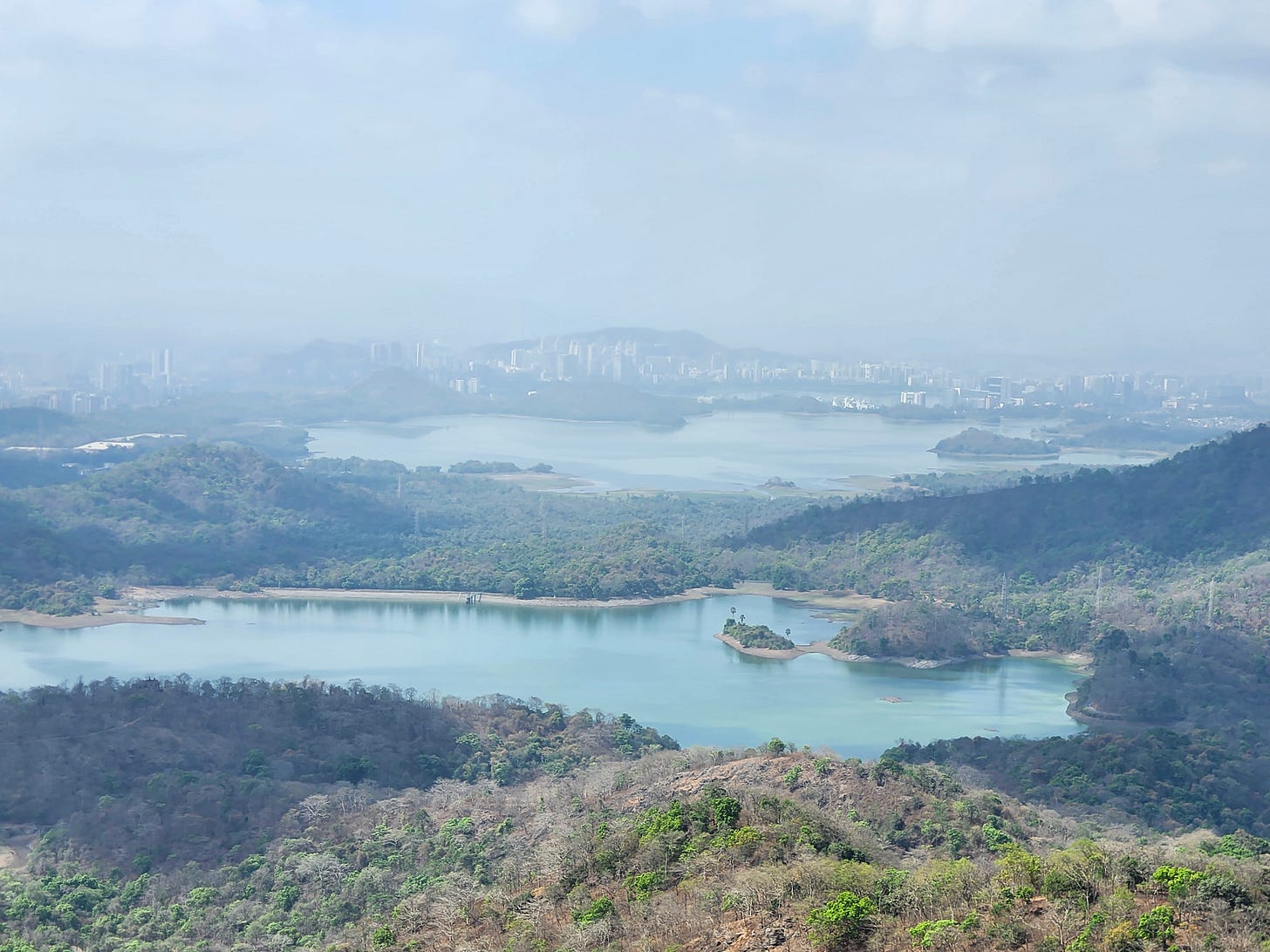
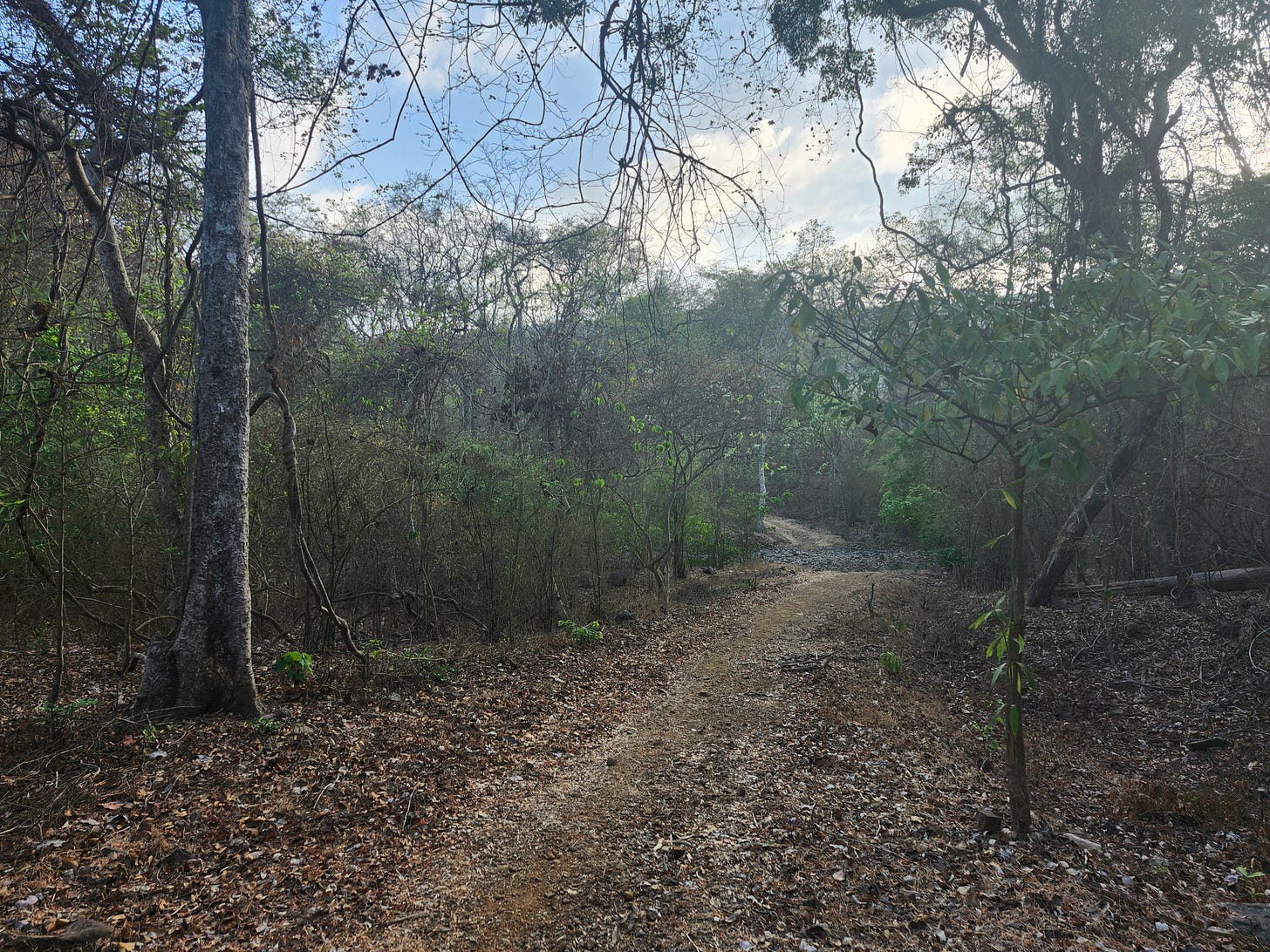
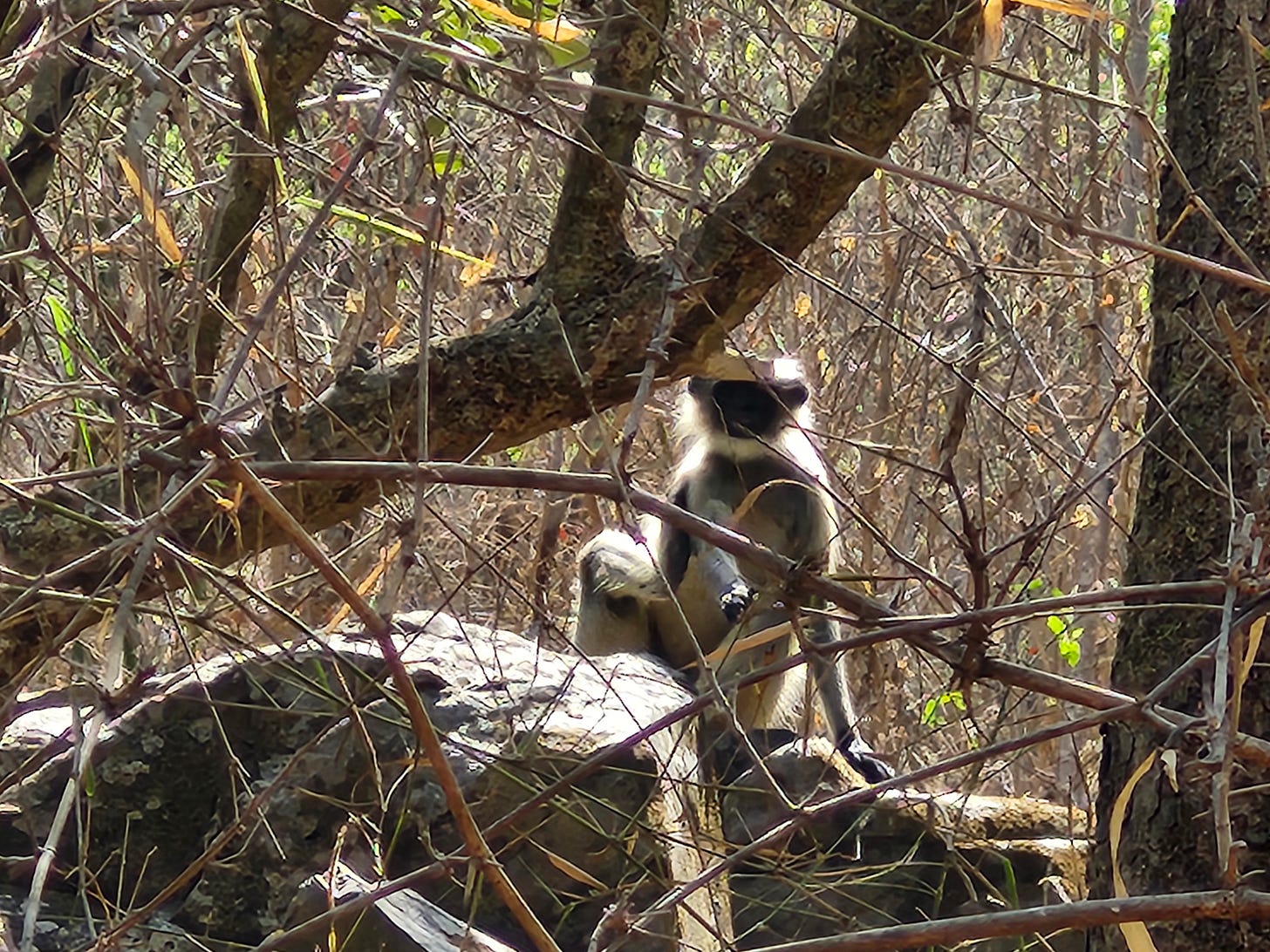
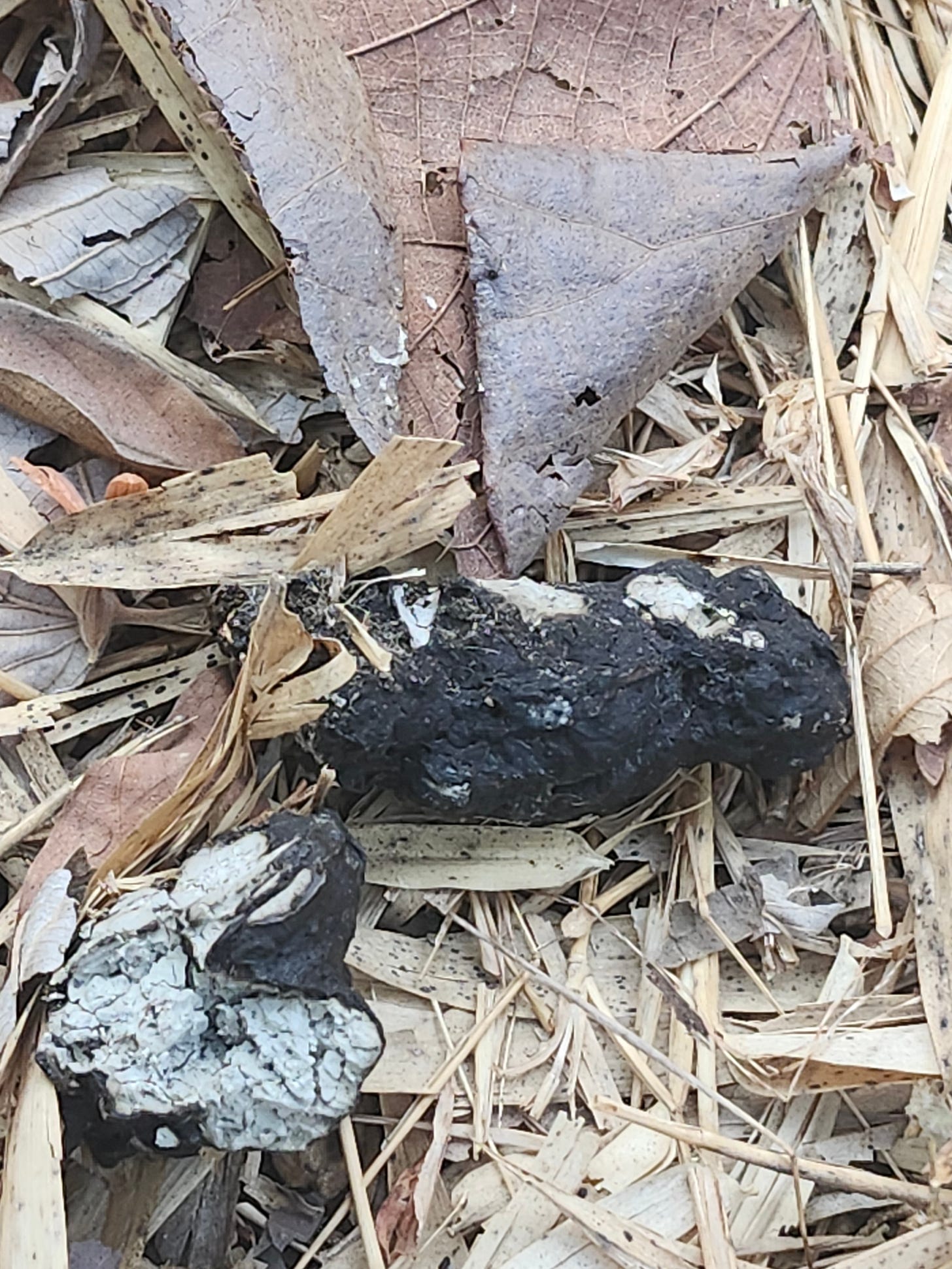
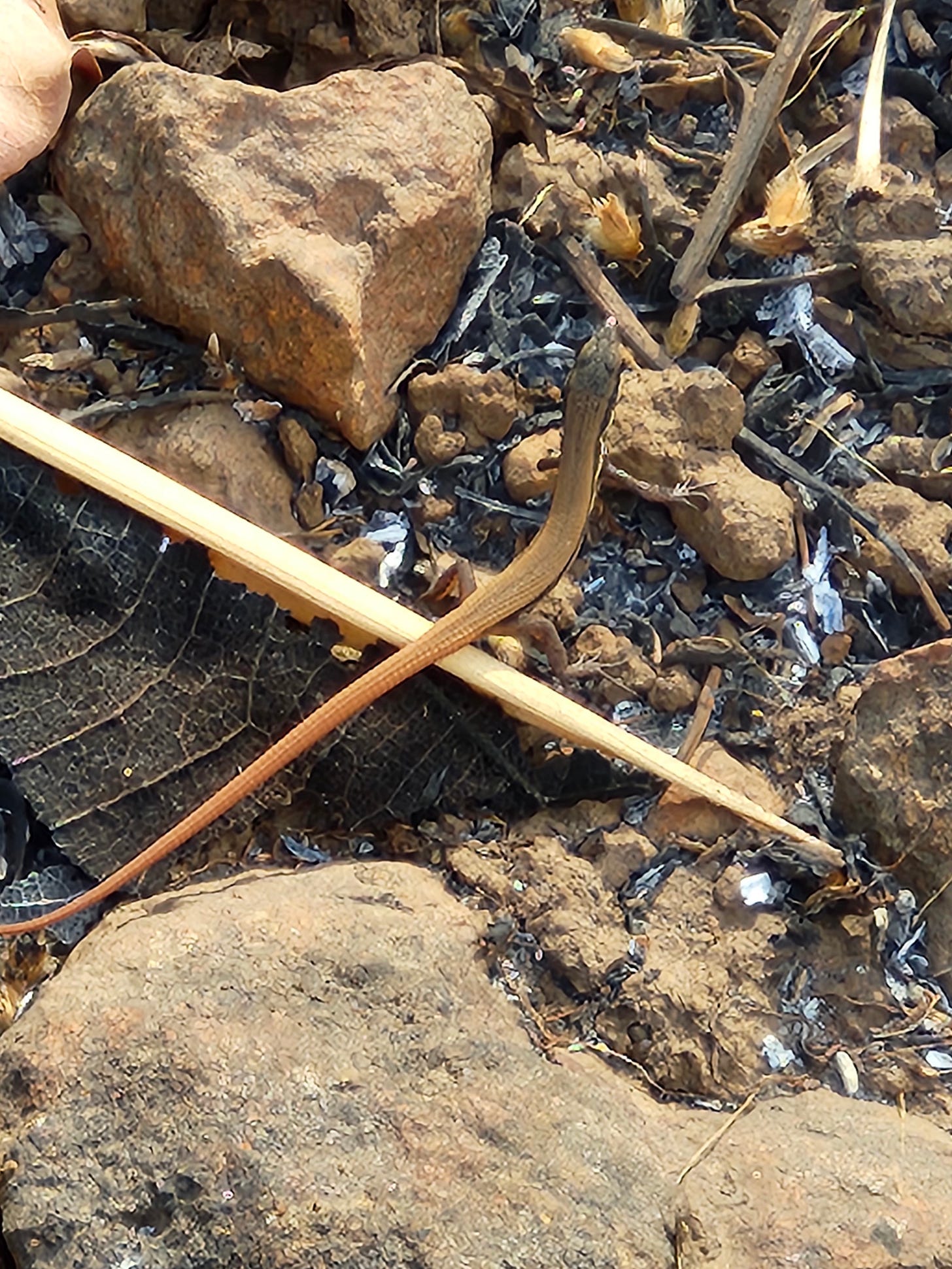

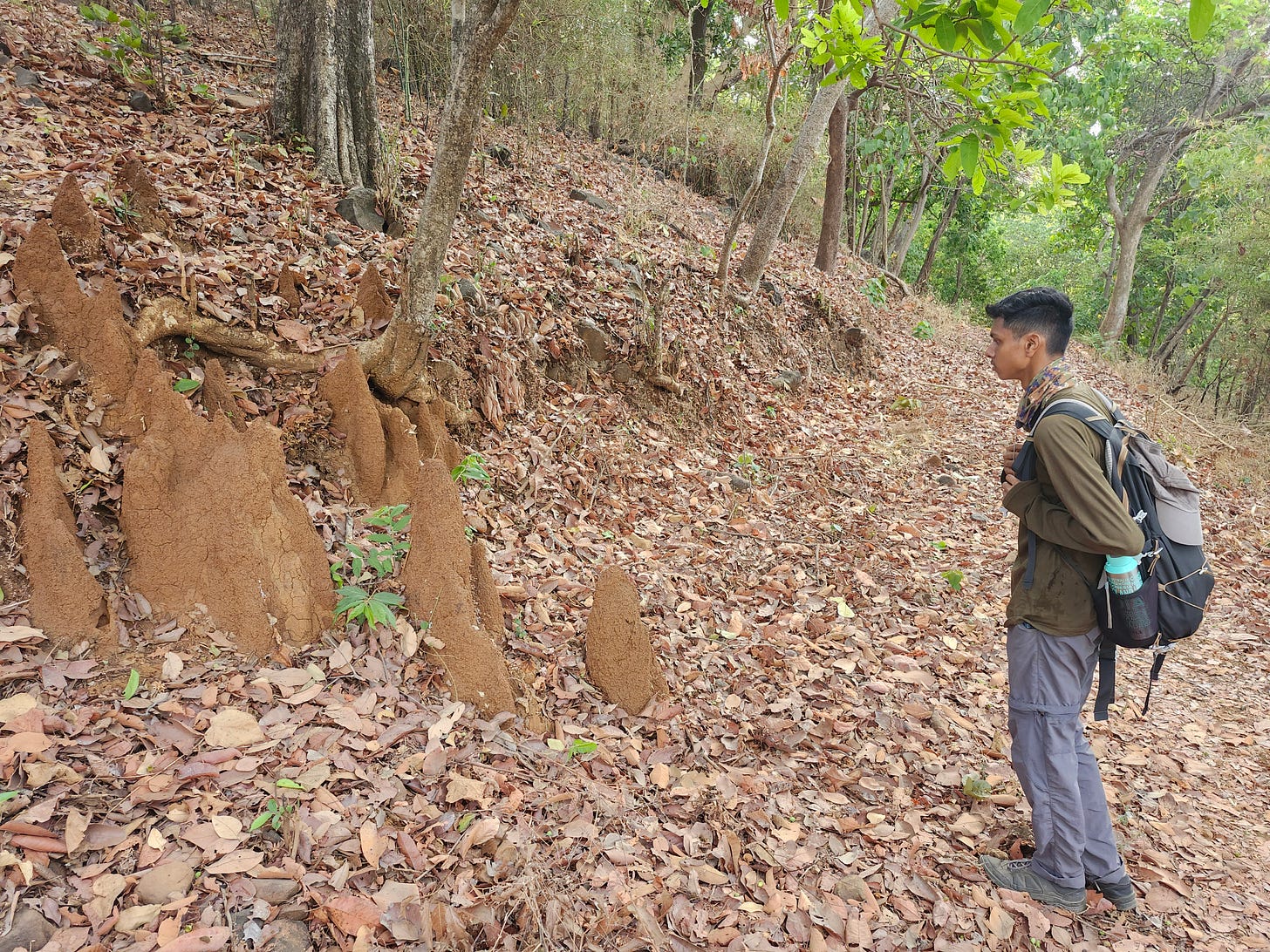

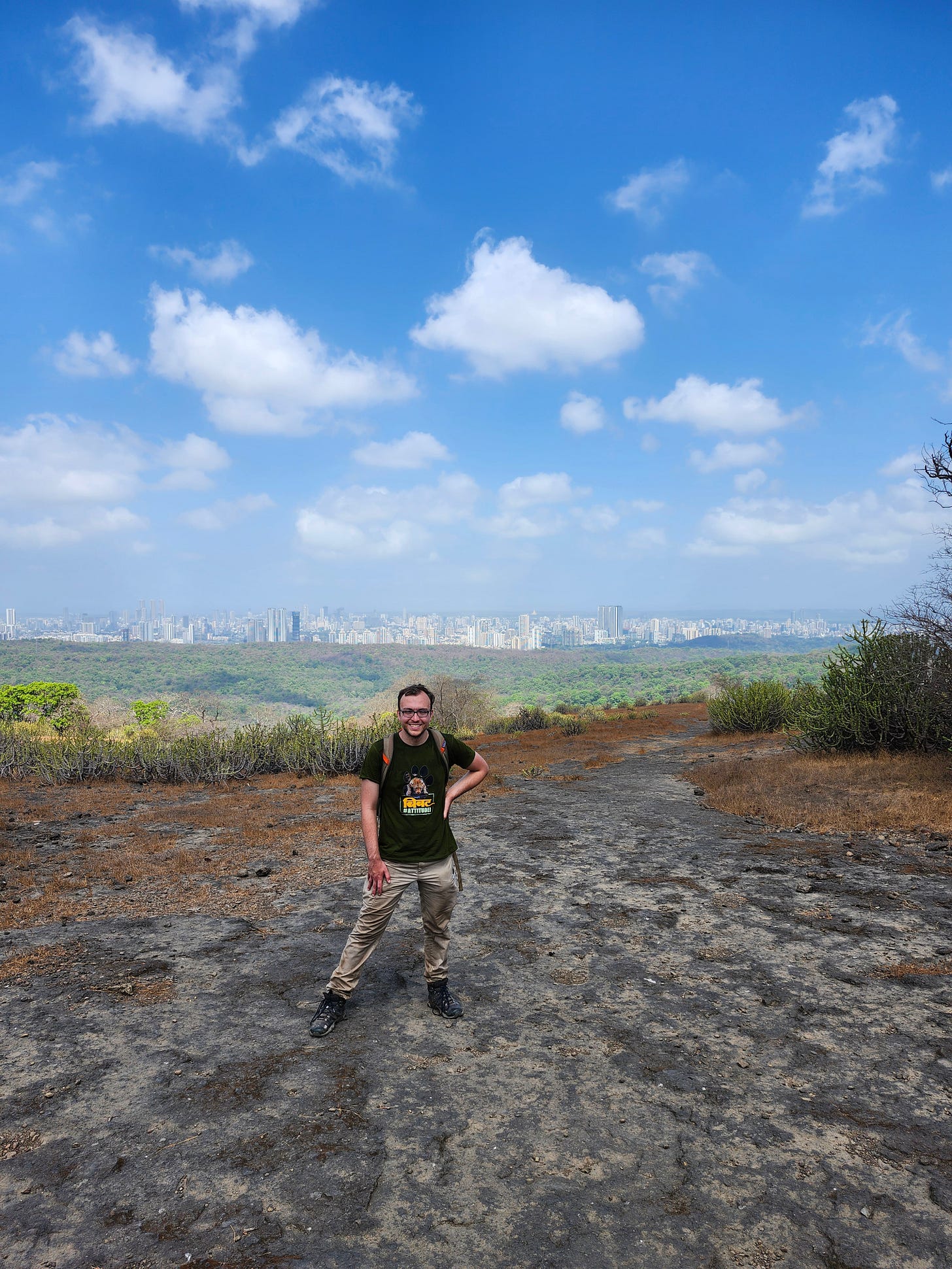
A really excellent day was had by you and your readers (vicariously). You offer a great deal of hope in this time of pessimism!